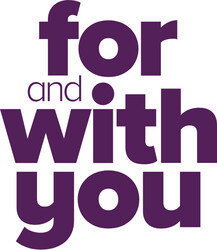So you've got your first full-time job, and you're itching to get started. You've negotiated your salary, and you're pretty happy with the result. It's more than you've ever earned before.
But when that first payslip comes in, it's full of numbers that leave you scratching your head. There are gross, net, taxation and superannuation amounts, not to mention deductions like your HECS/HELP study loan that you'd forgotten about.
What does it all mean, and where has your money gone? Don't worry. Here's how to make sense of it all.
About your payslip.
A payslip is a summary of a payment made to you by your employer. They are required to provide you with a payslip every time they pay you. It could be on paper or in electronic form.
Your payslip helps you keep track of how much money you've earned and taken home, plus any superannuation contributions and other deductions.
Terms on your payslip
- Gross pay (before tax): the total amount of money you earned before making any deductions
- Net pay (after tax): the amount of money paid into your bank account after all deductions were made. You've got to meet your expenses and make your savings from this amount. It is also known as your take-home pay.
- Pay period: The dates you worked that are covered by your payslip.
- Pay cycle: The frequency with which you get paid. This is different from employer to employer.
- HELP (previously HECS): Your debt owed to the Australian Government for your higher education studies. You must start repaying the debt once your income reaches a certain amount (currently $46,620 for the 2020-2021 financial year).
- PAYG Tax: This is money withheld by the tax office each pay period, based on your estimated earnings for the current financial year.
Taxes and levies.
You will see PAYG on each payslip. The tax office may refund some of it at tax time.
Australia has a tax-free threshold which means that you don't start paying tax until you earn a certain amount. The tax-free threshold only applies to your primary job. You pay a portion to the government in tax for every dollar you earn above the tax-free threshold.
A Medicare levy is also applied to your income unless it's below a certain amount. If you earn above a certain amount and don't have private health insurance, you'll also pay the Medicare Levy Surcharge.
Superannuation.
Superannuation is a way to save for your retirement.
Throughout your working life, your employers will make contributions to your superannuation fund. You might also make personal contributions to help build your superannuation fund faster.
The more superannuation you save, the sooner you may be able to stop working.
You should choose your superannuation fund carefully. Alternatively, your employer will select one on your behalf. All funds have fees and charges, so make sure you don't have your superannuation spread across more than one fund.
Your pay summary should include your fund's name and the amount of money allocated in each pay cycle.
More tools for understanding managing your money.
- Calculate your income and expenses with our handy Budget Planner
- See how your money could grow over time with our Deposit Planner
- Read our six strategies for managing money






